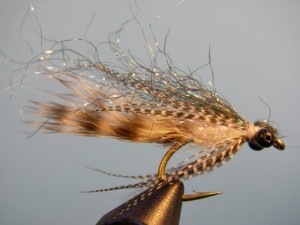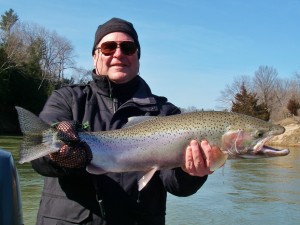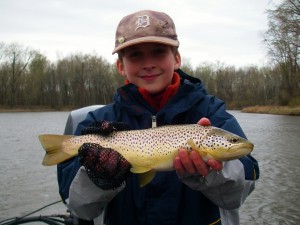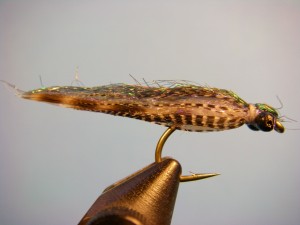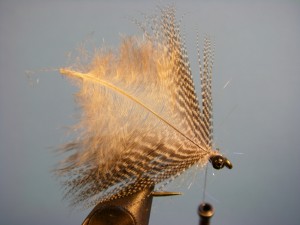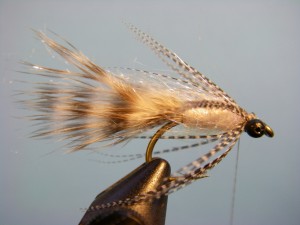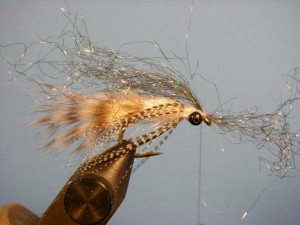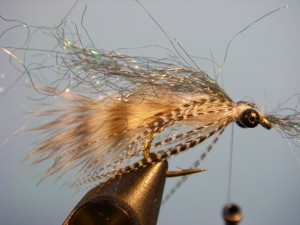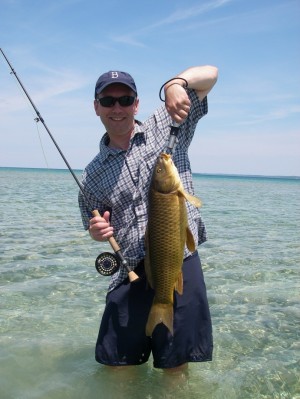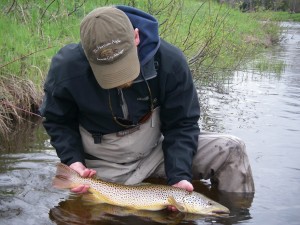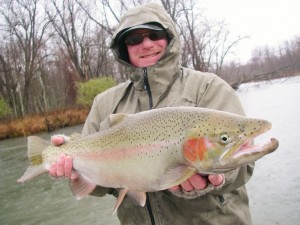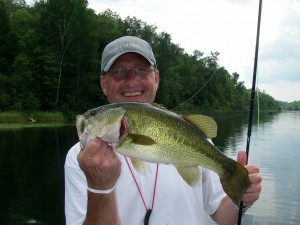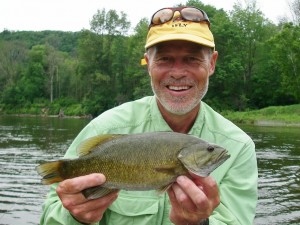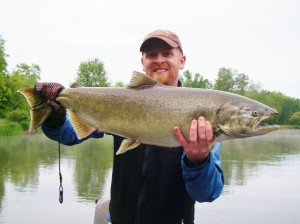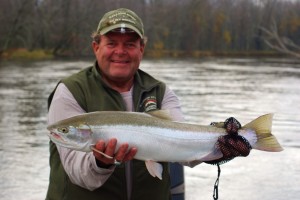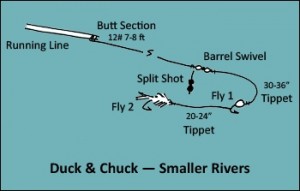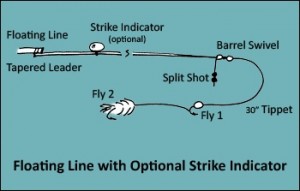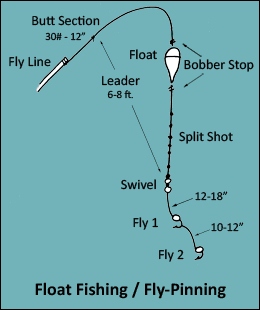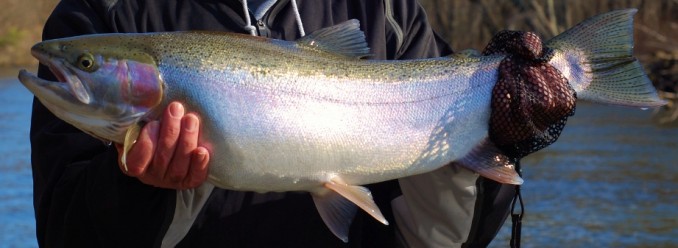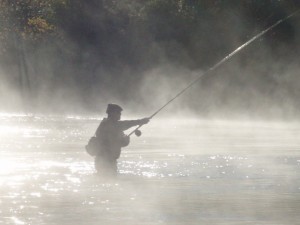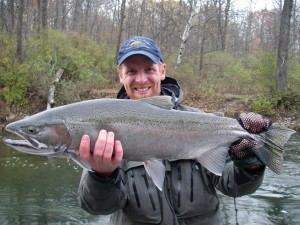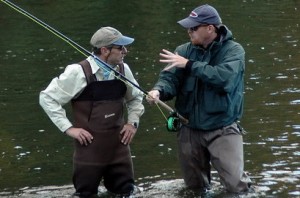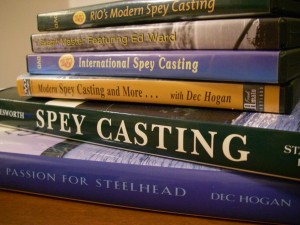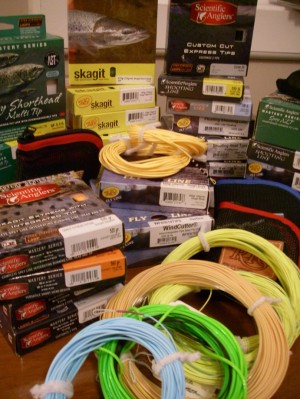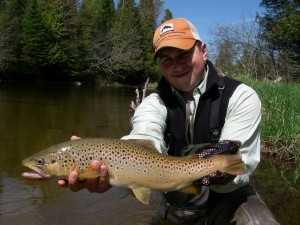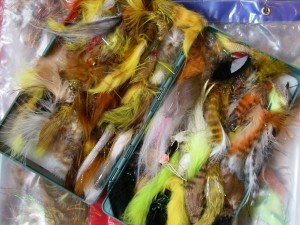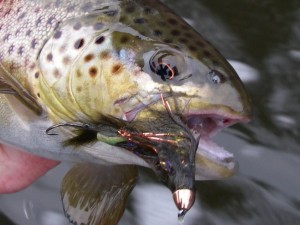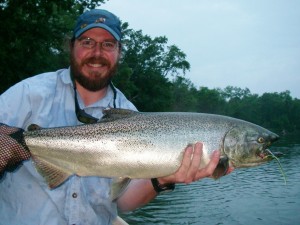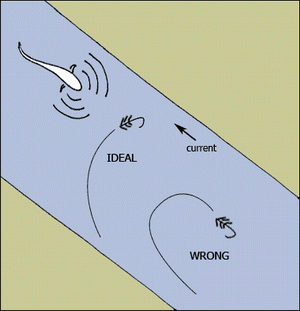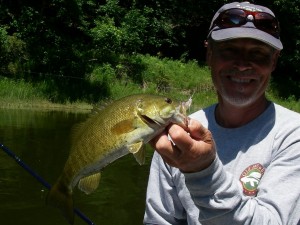Each year as millions of salmon eggs turn into salmon, both steelhead and trout take notice and advantage of these naive, freshly hatched “minnows.” I originally developed this fry pattern for steelhead, but it didn’t take long for the trout to convince me they like it too, making it a staple in my fly box from March through June.
In rivers like the Manistee, Betsie, Bear Creek and the Pere Marquette, where natural reproduction of salmon is prolific, have some fry patterns with you. After the salmon eggs develop into alevins in February and March, the egg sack disappears and small fish/fry swim in much of the same gravel section of water that steelhead have recently migrated to.
While these small fish are a protein source, they are also future competition for the steelheads’ offspring. As nature and instinct takes over, the salmon fry is eaten. Trout recognize these naive fish as a food source, too, and are often the reason you see trout breaking the surface when no hatch seems to be taking place — they are chasing these fry to the surface to eat them.
When fishing for steelhead, I fish this fly like any other nymph — typically below an egg pattern — and I tend to swing the fly at the end of the drift, even as it rises off the bottom. These slack-less drifts/presentations are unrecognizable as you feel the tug from a fish immediately. Look for the take to be anywhere through the drift with this pattern.
Both fry and trout tend to move to the edges of the river— especially in higher water — which makes it a great place to target trout. Fishing the Fonzi Fry on a floating line with either a mono leader or sinking leader with a down-and-across swing (think soft-hackle fishing) works well. At the end of your drift (the “hang-down”), twitch the fly and strip it back in to add movement and possibly elicit a fish. This pattern can also be fished on a smaller sink-tip line to get a little deeper or it can be fished as a tandem rig behind a much larger streamer pattern.
The Fonzi Fry is available from Rainy’s Flies and can be bought in stocking fly shops. Below are tying instructions for you fly tiers.
Recipe
Hook: TMC 2457 #8
Thread: Gray Uni 6/0
Tail: Grizzly Marabou
Body: Ice Dub – UV pearl
Thorax: Ice Dub- UV pearl
Collar: Teal Feather
Eyes: Bead Chain – Black, Small
Back: Ice Dub – peacock
Tying Instructions
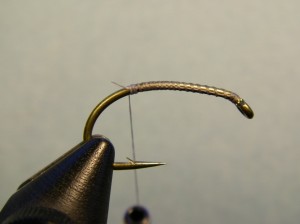 Step 1. Wrap base layer of thread to above hook barb.
Step 1. Wrap base layer of thread to above hook barb.
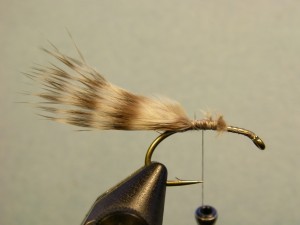 Step 2. Tie in tail – length to be as long as hook itself. Tie off
Step 2. Tie in tail – length to be as long as hook itself. Tie off
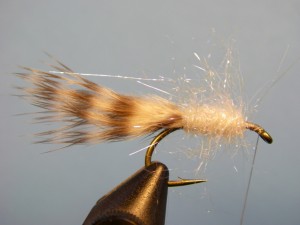 Step 3. Dub ice dub body, loosely, 2/3rds up shank towards hook eye.
Step 3. Dub ice dub body, loosely, 2/3rds up shank towards hook eye.
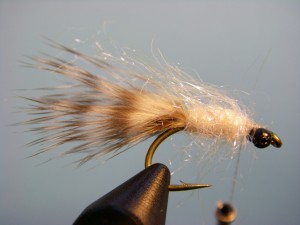 Step 4. Tie in Eyes just behind hook eye on underside of the hook
Step 4. Tie in Eyes just behind hook eye on underside of the hook
Step 5. Tie in teal collar by the tip and fold, wrapping at least once just in front of the dubbed body.
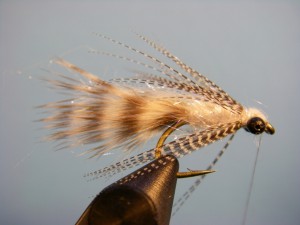 Step 6. Dub in front of the teal and around the hook eye (figure-8)
Step 6. Dub in front of the teal and around the hook eye (figure-8)
Step 7. Prepare some peacock ice dub and tie in so it extends forward,
over eye, wrap down behind hook eye, then move thread behind eyes.
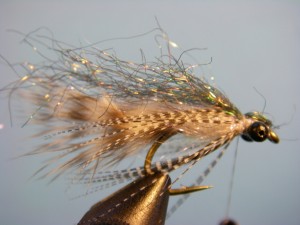 Step 8. Pull Ice Dub back towards hook bend and tie down. Whip Finish.
Step 8. Pull Ice Dub back towards hook bend and tie down. Whip Finish.
Notes:
Pick out some of the body dubbing to give the fly a minnow like appearance but be careful it doesn’t extend beyond the marabou tail.
Be sure to use water-based head cement on this fly as other types will ruin the synthetic ice dub back. I have found Fish Pimp – Hard Headed head cement to be a very good product.

